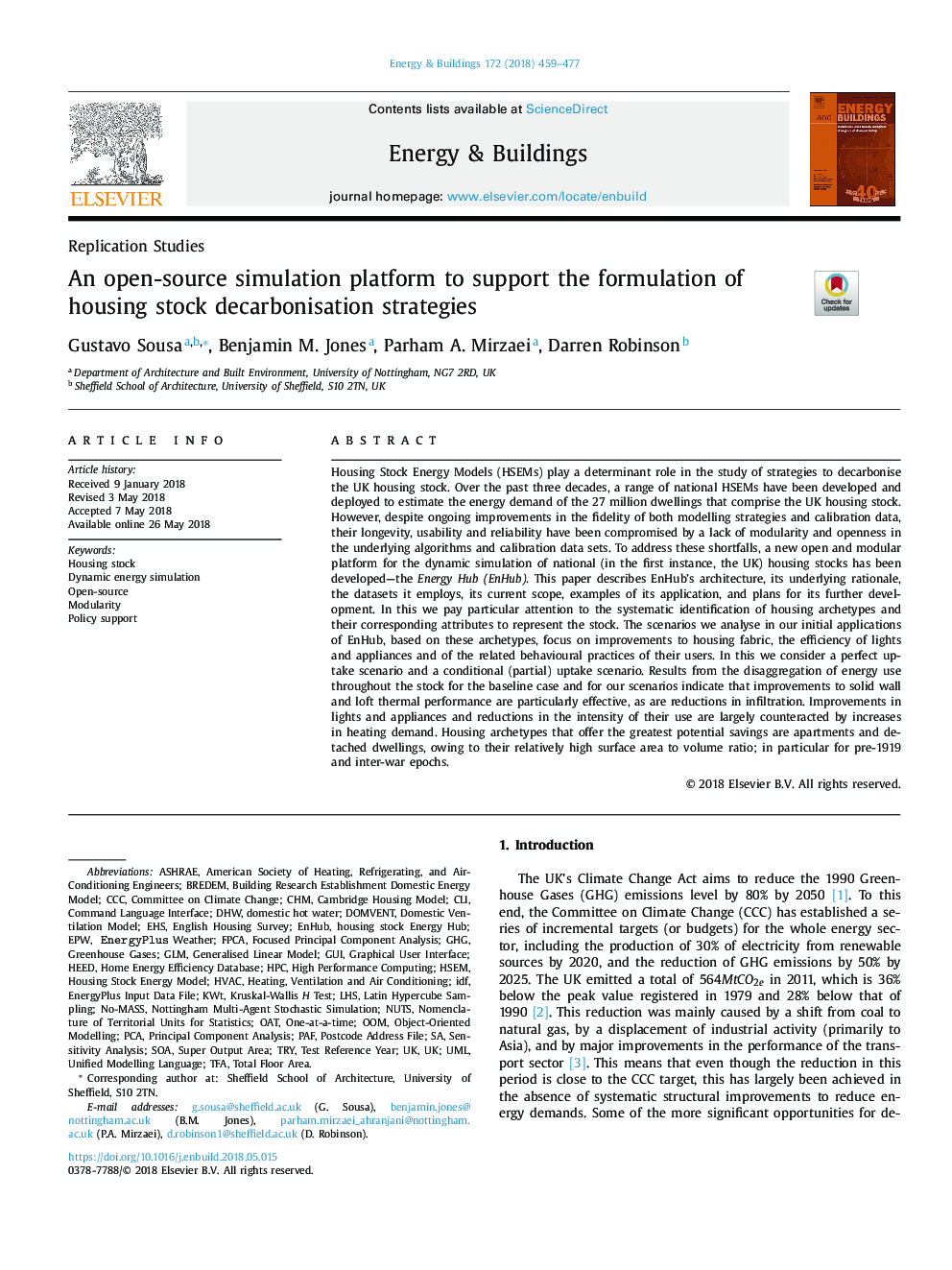| کد مقاله | کد نشریه | سال انتشار | مقاله انگلیسی | نسخه تمام متن |
|---|---|---|---|---|
| 6727698 | 1428918 | 2018 | 19 صفحه PDF | دانلود رایگان |
عنوان انگلیسی مقاله ISI
An open-source simulation platform to support the formulation of housing stock decarbonisation strategies
ترجمه فارسی عنوان
یک پلت فرم شبیه سازی منبع باز برای حمایت از فرمولبندی استراتژی های ذخیره سازی انبار مسکن
دانلود مقاله + سفارش ترجمه
دانلود مقاله ISI انگلیسی
رایگان برای ایرانیان
کلمات کلیدی
LHSEHSTFASOAUMLGLMCLiAmerican Society of Heating, Refrigerating, and Air-Conditioning EngineersFPCACCCEPWGHGASHRAECHMHPCOOMIDFPCA - PCADomestic hot water - آب داغ داخلیDHW - آب گرمNuts - آجیلSensitivity analysis - تحلیل حساسیتPrincipal component analysis - تحلیل مولفههای اصلی یا PCATRY - تلاش کردنHVAC - تهویه مطبوعOat - جو دو سرGraphical user interface - رابط کاربر گرافیکیGUI - رابط کاربری گرافیکیUnified modelling language - زبان مدل سازی یکپارچهTest Reference Year - سال مرجع آزمونHousing stock - سهام مسکنDynamic energy simulation - شبیه سازی انرژی پویاOpen-source - متن بازHigh performance computing - محاسبات با کارایی بالاGeneralised Linear Model - مدل خطی کلیObject-oriented modelling - مدل سازی شی گراModularity - مدولار بودنNomenclature of Territorial Units for Statistics - نامگذاری واحدهای حوزه آمارLatin hypercube sampling - نمونه برداری لاتین هپقوبPAF - نیروی هوایی پاکستانPolicy support - پشتیبانی سیاستGreenhouse gases - گازهای گلخانه ایHeating, Ventilation and Air Conditioning - گرمایش، تهویه و تهویه مطبوعOne-at-a-time - یکی یکی
موضوعات مرتبط
مهندسی و علوم پایه
مهندسی انرژی
انرژی های تجدید پذیر، توسعه پایدار و محیط زیست
چکیده انگلیسی
Housing Stock Energy Models (HSEMs) play a determinant role in the study of strategies to decarbonise the UK housing stock. Over the past three decades, a range of national HSEMs have been developed and deployed to estimate the energy demand of the 27 million dwellings that comprise the UK housing stock. However, despite ongoing improvements in the fidelity of both modelling strategies and calibration data, their longevity, usability and reliability have been compromised by a lack of modularity and openness in the underlying algorithms and calibration data sets. To address these shortfalls, a new open and modular platform for the dynamic simulation of national (in the first instance, the UK) housing stocks has been developed-the Energy Hub (EnHub). This paper describes EnHub's architecture, its underlying rationale, the datasets it employs, its current scope, examples of its application, and plans for its further development. In this we pay particular attention to the systematic identification of housing archetypes and their corresponding attributes to represent the stock. The scenarios we analyse in our initial applications of EnHub, based on these archetypes, focus on improvements to housing fabric, the efficiency of lights and appliances and of the related behavioural practices of their users. In this we consider a perfect uptake scenario and a conditional (partial) uptake scenario. Results from the disaggregation of energy use throughout the stock for the baseline case and for our scenarios indicate that improvements to solid wall and loft thermal performance are particularly effective, as are reductions in infiltration. Improvements in lights and appliances and reductions in the intensity of their use are largely counteracted by increases in heating demand. Housing archetypes that offer the greatest potential savings are apartments and detached dwellings, owing to their relatively high surface area to volume ratio; in particular for pre-1919 and inter-war epochs.
ناشر
Database: Elsevier - ScienceDirect (ساینس دایرکت)
Journal: Energy and Buildings - Volume 172, 1 August 2018, Pages 459-477
Journal: Energy and Buildings - Volume 172, 1 August 2018, Pages 459-477
نویسندگان
Gustavo Sousa, Benjamin M. Jones, Parham A. Mirzaei, Darren Robinson,
